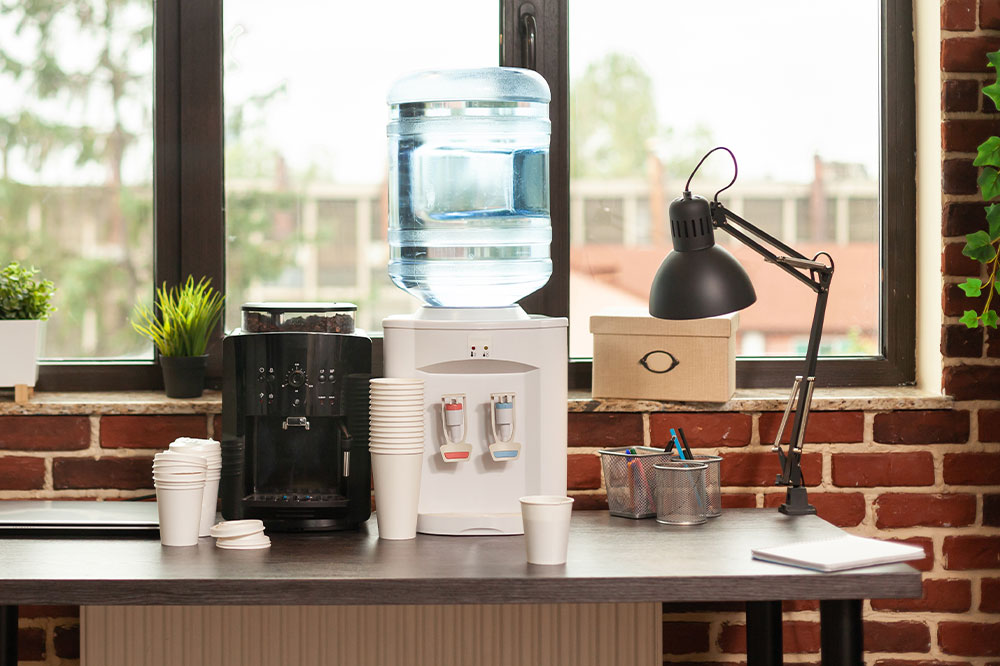Top reasons to use water dispensers and coolers

Water coolers ensure one has cool drinking water available at all times. While these machines are very common in workplaces or other professional establishments, they are less common in household settings. Things have changed over the past few years, and people are slowly welcoming the idea of buying water coolers for their houses, as they are also a healthy alternative to tap water. Here are a few reasons for using water coolers or dispensers at home:
1. Safe to drink
Compared to tap water, drinking out of a water cooler or dispenser is healthier. Tap water is exposed to contaminants like chlorine, bacteria, and even uranium or other contaminants if the water is close to the source of these minerals. These contaminants can cause serious infections in people, especially children. The body loses immunity and gets more vulnerable with time. On the other hand, water dispensers ensure that the water is clean and purified for drinking because they have an in-built filtration system for all these contaminants.
2. Easy to use
It is a device that is so user-friendly that even children can use it without any hassle or extra help. It is such a convenient tool and is available within easy reach. When kept for easy access, the water dispenser encourages everyone in the house to drink more water, leading to better hydration for everyone. One does not have to worry about the kids’ health as they use the cooler to fill their cups or bottles. It may also be a fun activity for kids to use the water dispenser independently.
3. Less plastic usage
When a water dispenser is available, one will not have to keep buying several plastic bottles of water for drinking at home. So, buying a water cooler or dispenser is much more sustainable for the environment. Using plastic bottles is not only unsafe for health but also creates a huge landfill waste issue that is tough to manage. So, using a dispenser makes for a sustainable way to tackle this waste management problem.
4. Promotes healthy habits
Often, people open the fridge to get water because they are thirsty, but they may instead choose to drink a beverage like soda or other soft drinks loaded with sugar because it is cooler. While it quenches the thirst at the moment, it also leads to the consumption of other unhealthy drinks, which can easily be avoided. With a water dispenser or cooler available, drinking water becomes easy, and one does not end up drinking unhealthy beverages. With proper hydration, health, including skin health, improves with time.
5. Is utilitarian
Water dispensers come with a host of benefits; one can make instant tea or coffee. There is no need to boil or make tea in the kettle. Water dispensers ensure that one gets clean, hot, or boiled water from the dispenser, which is safe for all members. It also saves one time and energy, which is a better solution when one has a busy schedule.
6. Serves more people
This is a great way to ensure everyone at home is well-hydrated when they come to visit one. If there is tap water, one may have to boil it and then cool it down for people to drink. However, one has to push a button with a dispenser, and water is available. Also, one does not have to open so many plastic bottles. Use a cup to pass the water to anyone who needs it. And if anyone is thirsty for more, they can quickly and conveniently help themselves. Just as one makes hot tea and coffee for oneself, one can do the same to serve their guests and not even waste too much time and utensils.
7. Is economical
Getting a big bottle of water for the dispenser is more economical than getting several small water bottles, which makes for a costly affair. Not to mention the amount of space these plastic bottles can take in the fridge, where one can utilize the space for more food and other beverages served in the household. One can even make observations for a couple of weeks and understand how much money getting bottled water from outside can cost the household’s monthly budget.
Many water dispensers and coolers are available on the market, but it is important to know what kind of filtration technology one wants for the dispenser. A few examples include point-of-use coolers, which are economical and easy to use; countertop dispensers, which don’t take up a lot of space; top-loading gallon coolers, which are convenient; and water-plus ice dispensers, which are versatile. One can choose either of these depending one one’s budget and utility requirements. Speak to the customer service executive to learn more about the different kinds and styles of water dispensers and how to utilize them best at home with the family.







